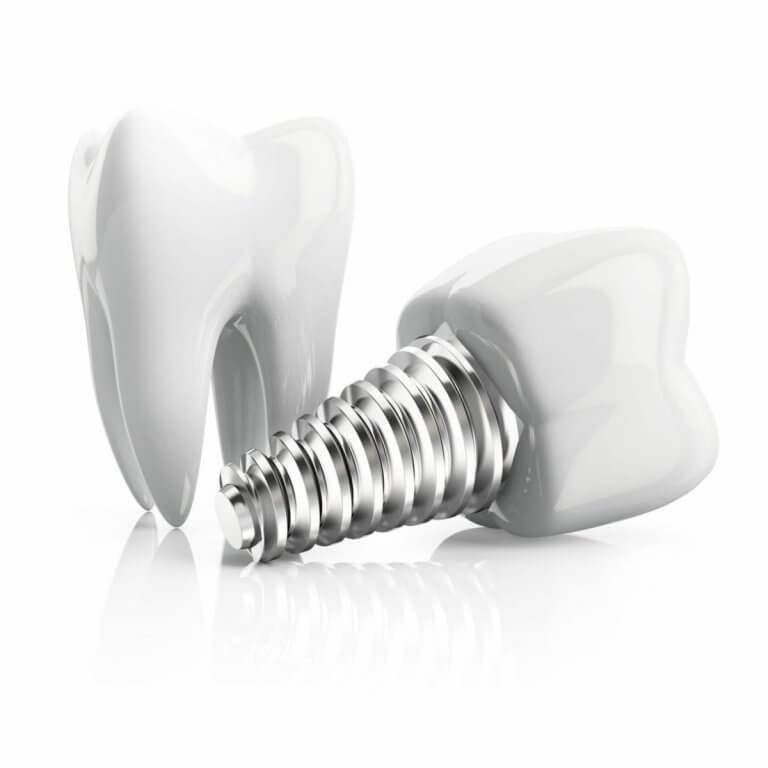When Do I Get My Replacement Teeth?
When we get involved with replacement teeth, the question regarding the end of treatment is on everyone’s mind. This question never appears when treating younger patients with small cavities requiring fillings. Those patients are not missing any teeth, so no urgency exists. The dentistry that I perform is started and finished on the same appointment.
Timing questions begin to surface when I replace a missing tooth. Either the patient came to me with a space in their mouth, or I removed a non-salvageable tooth resulting in the space. If the space is towards the front of the mouth, then everyone wants to finish treatment as soon as possible.
My patient of the week came to see me with a broken bridge on the upper right side toward the front of his mouth. I discussed his case a few weeks ago and highlighted some unique concerns with his mouth.
This week, I saw him again for a tooth for a follow-up procedure. Although the bridge on the upper right was missing for a while, he wanted to know when he would get new teeth in that area. The gap immediately to the right of his front teeth was a cosmetic concern and a functional issue.
In combination with missing teeth on his lower left side, this area of the upper right impacted his quality of life. He learned to adjust his eating habits and style to accommodate those gaps.
“Immediate Implant” is a Misleading Term
When I saw him a few weeks ago, I removed decayed and broken roots from his mouth. I performed a procedure which is called an immediate implant. The name describes what happened and its timing. I removed a root and followed up on the same visit with an implant. An immediate implant is not for everyone or for every situation. I try to make this the norm in my office as its use will save the patient time and money.
Our terminology is a source of confusion for many patients. Typically, and rightfully so, when patients think of an implant, their vision goes to the finished product. Before seeing me, they were missing a tooth or teeth. Either the tooth was removed years ago, or it was in a state that would not allow any procedure to salvage that tooth.
A dental implant procedure replaces the missing or soon-to-be-lost tooth by inserting an artificial tooth in its place. Now the term implant morphs into an entire tooth which is not correct.
A Dental Implant is an Anchor
A dental implant is an anchor and nothing more. An implant replaces the tooth’s natural root with an artificial one. In the same way that a root provides a base for the visible part of the tooth, an implant provides a base for the new artificial tooth. We call that artificial tooth a crown that gives us cosmetics and function.
For Replacement Teeth The Osseointegration Process Takes Time
Now that you understand the definition of an implant, why can’t I connect the artificial tooth to it immediately. The answer is simply one of strength. Even though the implant sits in the jaw, the jaw has not joined it to create a cohesive unit to withstand the force of chewing. The medical term for this is “osseointegration.” That process takes time.
Modern Materials & Techniques Significantly Shorten the Waiting Period
The good news is that due to new materials and techniques, the waiting period is much shorter than it used to be.
When I started doing implants almost 30 years ago, the waiting time to receive a tooth could be as long as six to eight months. We often get a tooth for a patient in six to eight weeks in 2022!
So I tell every replacement teeth patient to be patient as good things come to people with that attribute. If you feel it is time to explore this wonderful technique, please call us, and let’s talk. I will try my best to help you. Please call Nikki at 440.951.7856 for an evaluation, as I look forward to meeting you.
Jeffrey Gross, DDS, FAGD is an Ohio licensed general dentist and is on the staff of Case Western Reserve School of Dental Medicine.

